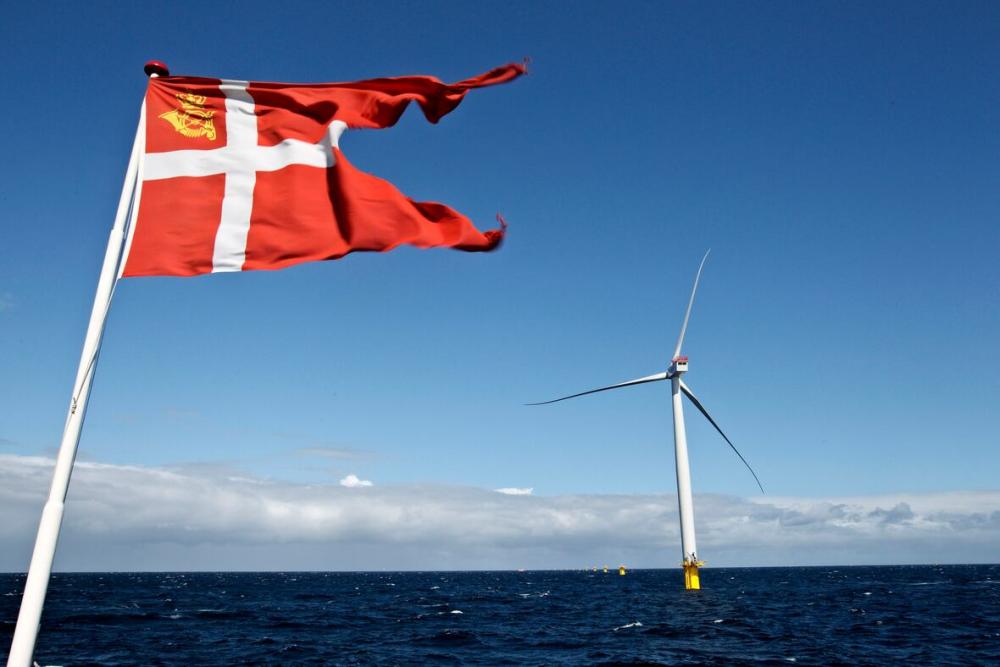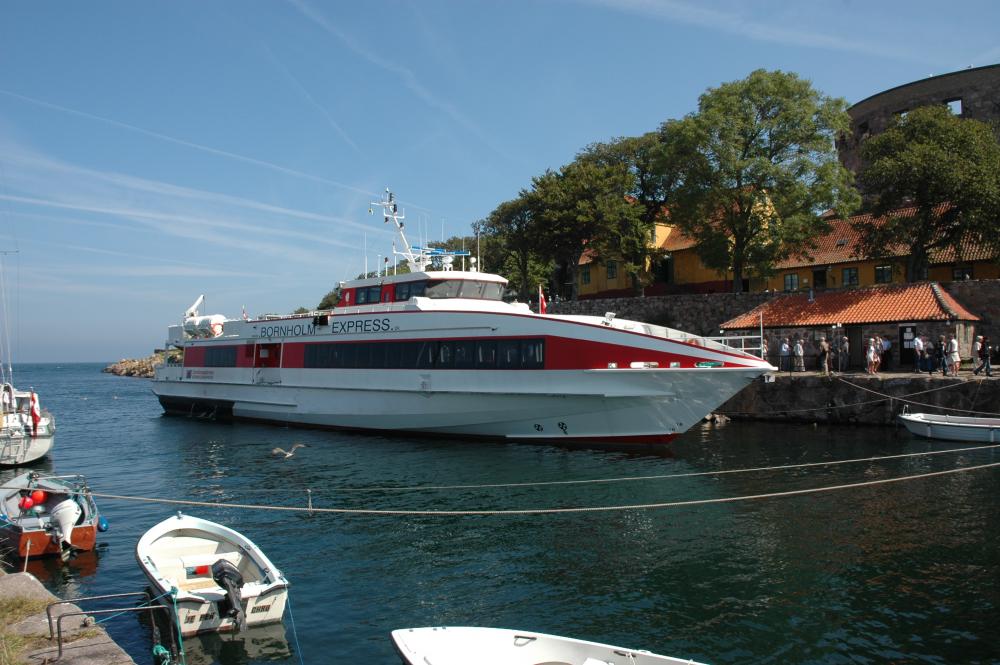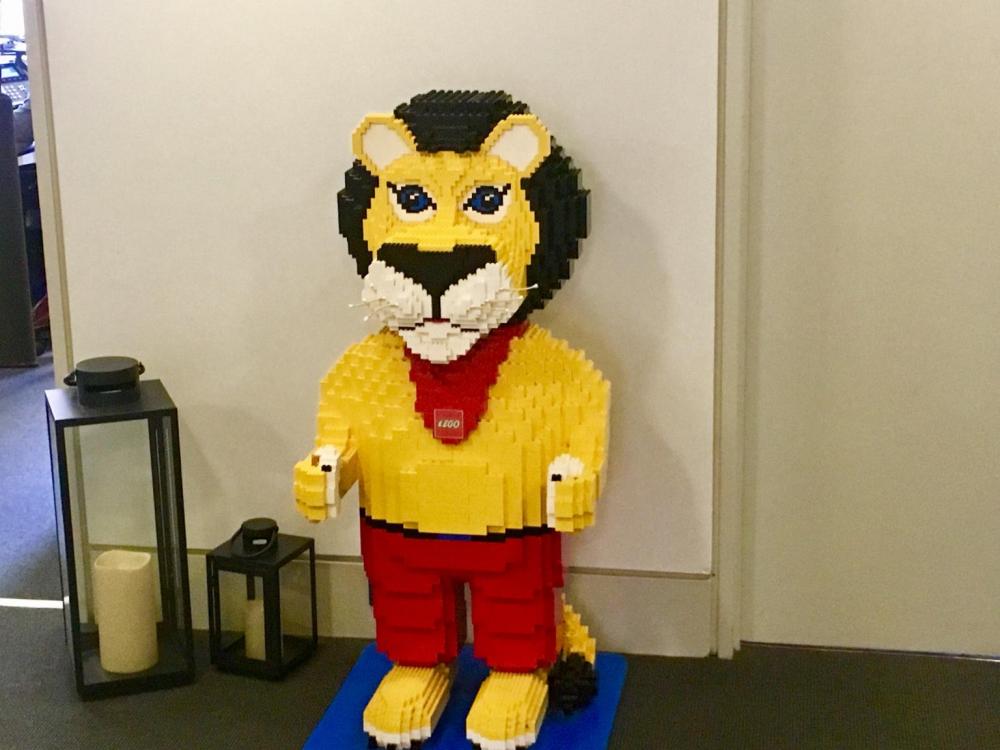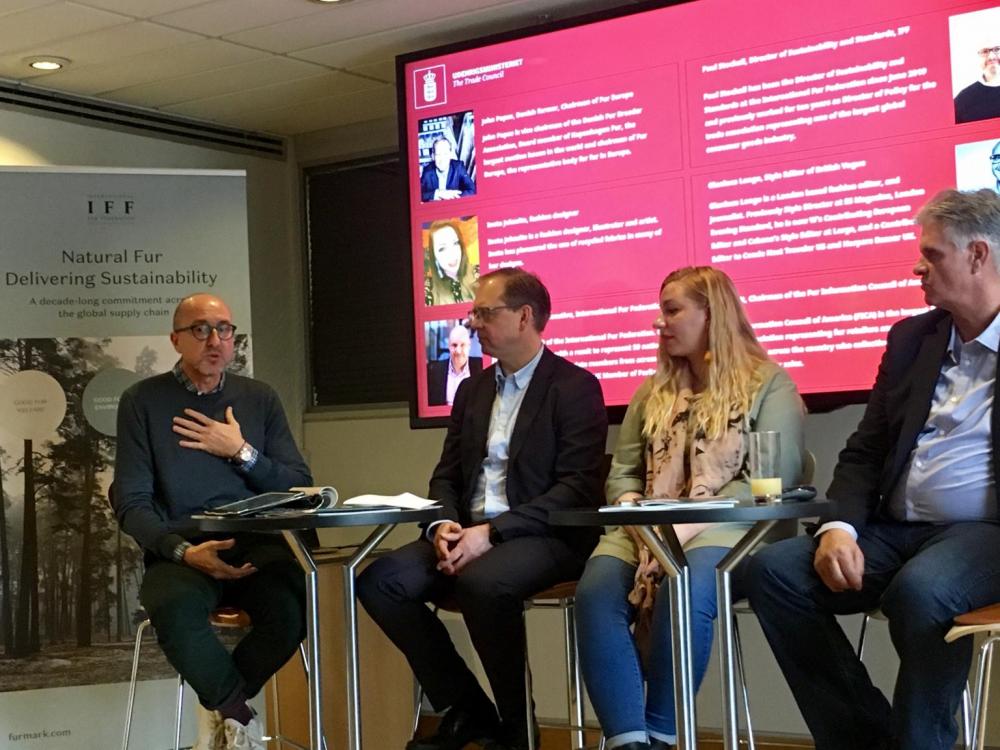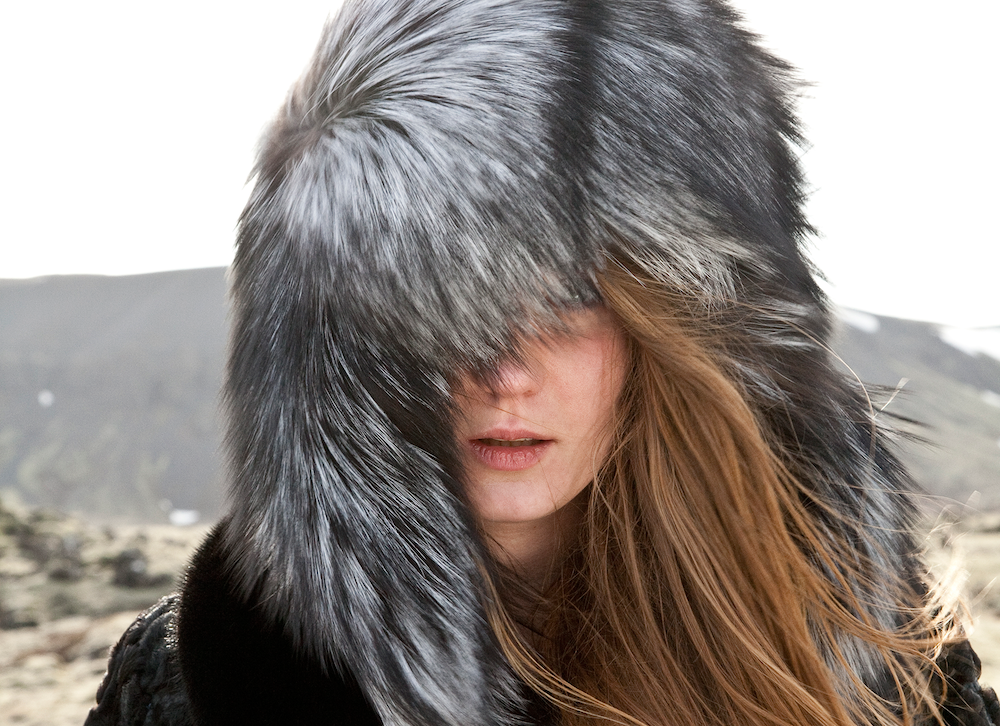Denmark Launches New ‘National Strategy’ For Green Investment
Danish fashion and design have long been regarded as cutting edge and successful over many years. Now a new national strategy for attracting foreign investments to Denmark focussed particularly on attracting technology and knowledge-based, green investments across all of Denmark has been launched.
Touted as the “first national strategy” for attracting foreign investments and in green growth segments, it will run from 2020 to 2023. And, the country has high ambitions to become super power in the green space.
“The new strategy is an important part of my green foreign policy. A foreign policy that contributes to Danish welfare and jobs across Denmark,” stated Jeppe Kofod, Denmark’s Minister for Foreign Affairs ahead of the launch on Tuesday, 18 February 2020, on the Danish island of Bornholm in the Baltic Sea.
A Danish Social Democratic politician and foreign minister since late June 2019, he added: “We will work to attract investments and solutions that contribute to reaching our climate goals. By attracting green investments to Denmark, we ensure that the green solutions of the future are developed and applied here and then exported globally.”
Danish Design & Innovation
While the Americans might be down for having invented the wind turbine way back in 1888, Denmark was named the ‘Green Capital of Europe’ in 2014 and is widely considered a leader in innovation in the field of wind power. The country is a leading producer of wind turbines, and has been working continuously toward environmentally sustainable energy.
On the design front, the Danes have not exactly been idle either. LEGO, the colourful, interlocking building brick toy, began life in a little workshop run by Ole Kirk Kristiansen in Billund, Denmark in 1932. Not many people might know that the origin of the name is a play on the Danish words, 'leg godt', which means ‘play well’.
Elsewhere, 1887 brought excitement to the beer drinkers of Denmark, when one Dr. Emil Christian Hansen, born in Ribe and a fermentation physiologist, discovered a method of creating pure yeast, thereby ending the beer disease that had plagued the country for years. It was a game changer for the industry.
Green ‘Super Power’ Goal
Kefod stressed that Denmark must be a “green super power” that acts on the global climate crisis and contributes to sustainable solutions worldwide.” The strategy has been launched on Bornholm, a Danish island (588 km²) in the Baltic Sea off the south coast of Sweden with a population around 40,000, and where Mr Kofod was visiting the ACDC-project, a collaboration between Nissan, Vestas, DTU, Circle Consult and Bornholm’s Energy & Utilities.
Last November, Orsted, a Danish power company based in Fredericia (Jutland peninsula) that is the nation's largest energy company, unveiled plans for a 5GW offshore wind hub to connect Denmark, Germany, Poland and Sweden, which would support large-scale production of green hydrogen and creating what is being labelled as "the world's first energy island" on Bornholm.
Wind & Solar Power
The nation generated some 50% of its power from wind and solar last year. Wind amounted to more than 47% of Danish electricity during 2019, with solar pushing green power towards the 50% mark. This surpassed a previous record of 43% set in 2017, and comes as Denmark pursues an emissions reductions goal of 70% by 2030, which has been laid down in law.
The latest Danish project unveiled by the Minister is aiming to develop new technology for charging stations that helps effectively to control the charging of electric vehicles. Simultaneously, the project supports a smart integration of electrical vehicles that can displace CO2 in the transport sector and ensure that electrical vehicles can contribute to the increased use of sustainable energy.
“The ACDC-project is a good example of what we aim to achieve with this new strategy,” Kofod said. “It has the potential to increase productivity and innovation in Danish business and support and accelerate the green transition, and it promotes growth and development across Denmark.”
The project also shows that successful attraction of foreign investments rests on a close collaboration between Invest in Denmark and municipalities as well as knowledge institutions and other local actors.
The ACDC-project is said to be have been attracted to Bornholm in a collaboration between Invest in Denmark, Copenhagen Capacity, Bornholm’s Municipality and Bornholm’s Energy & Utilities. Moreover, the project has received EUDP funding via the Danish Energy Agency.
With the help of Invest in Denmark (see: https://investindk.com/), part of the Ministry of Foreign Affairs that attracts knowledge, technology, capital and jobs (some 15,000 over the last 10 years) to Denmark in collaboration with public and private partners including Danish municipalities and universities. Modern American Recycling Services (M.A.R.S.) from the United States has also established a yard for recycling metals in Frederikshavn (see https://frederikshavn.dk/).
In a 32-page 'Investment in Denmark' document titled ‘Strategy For Attracting Foreign Investments, 2020-23’, which outlines the country’s latest thinking in the green and environmental spaces, one example provided is that of a 280,000 sq.ft yard. It is claimed as being the world's first shipyard built from the ground up to demolish scrapped ships and drilling platforms so that the metal can be recycled.
Dwight Caton, CEO of M.A.R.S., commenting said: ”We have decided to establish our facility in Denmark due to the nation’s strong focus on sustainable recycling. We chose Denmark because we want to do it right.”
It is understood that interest in Denmark arose in connection with a conference in Houston in 2015, when Frederikshavn Harbor and Business North introduced M.A.R.S. to the possibilities of building a modern and sustainable yard at the facility on the northeast coast of the Jutland peninsula in the north of the country. The yard opened last September and will employ up to 200 employees.
Amongst other things, M.A.R.S., founded in 1971 and today the largest barge dismantler and offshore decommissioning provider in the United States, will scrap and recycle metal from the two main platforms - Tyra East and Tyra West - from Maersk’s Tyrafelt in the North Sea, which in total weigh over 23,000 tonnes. This is the largest scrappage and recycling of offshore structures in Denmark's history.
Showing that this Danish initiative is not an isolated case in terms of pushing the green agenda, last November Ministry of Foreign Affairs of Denmark announced it would appoint 15 new “Green front Line” missions, establish a new green department, and launch its first sustainability strategy.
This is aimed at accelerating and promoting Danish green solutions around the world and work for a Danish leadership on SDG 7 on affordable and clean energy. “We need to increase the use of diplomacy and resources in the green transition,” said Minister Kofod.
At around the time on 10 November 2019, Tomas Anker Christensen was also appointed as Denmark’s climate ambassador following the government’s decision to strengthen the global Danish leadership within green transition.
Fur Trade & Sustainability
Separately, the International Fur Federation (IFF), the global body for the fur sector, launched a sustainability strategy - ‘Natural Fur’ - this Monday (17 February) at the Danish Embassy in London, which I attended. It was perhaps no coincidence that the embassy was chosen as location for the launch given that Denmark produces around half of all fur in Europe and is home to the world's largest auction house in the sector, Kopenhagen Fur, owned by Danish fur breeders. (See: www.kopenhagenfur.com).
Ulrik E. Petersen, the deputy head of the Danish embassy in the UK, opening proceedings said: "Clearly fur has a significant footprint in country both financially and environmentally. The latter part of that we will now to seek to reduce as much as possible."
Mr Petersen added: "Danish farmer play a pivotal role in this development. They have been at the forefront of raising standards in recent years. This is not only in terms of animal welfare but also in terms of environmental protection and sustainability. Their work aligns with the Danish government's ambition to implement clear goals in sustainability."
Coinciding with London Fashion Week, the IFF’s programme is touted as ambitious and “a clear direction of travel for the industry and wider supply chain around animal welfare, environmental protection and for the people and communities that work in the sector as part of its first sustainability strategy.”
The Natural Fur Strategy will consist of three key pillars and eight major initiatives, namely:
1. Good for Welfare
2. Good for the Environment
3. Good for People
Mark Oaten, IFF’s chief executive who moderated a panel discussion at the embassy comprising John Papsø, a Danish farmer and Chairman of Fur Europe, Ryan Holt, Chairman of the Fur Information Council of America, Gianluca Longo, Style Editor of British Vogue and Ineta Joksaite, a Lithuanian fashion designer based in Glasgow, said “This strategy will set out a framework and future ambitions for the fur sector, based around the UN’s sustainable development goals, and will consist of ground-breaking global initiatives, targeted interventions and clear goals that will move the industry to becoming truly sustainable.”
He added: “Fur is one of the most sustainable natural materials, the epitome of ‘slow fashion’, and is an industry worth an estimated $30 billion per year that employs hundreds of thousands across the globe. All of those involved in the sector and wider supply chain have a role to play in helping to meet and deliver these ambitious goals and this strategy will help them to do that.”
A ‘FURMARK’, similar to ‘Woolmark’, is a global welfare certification and traceability for natural sustainable fur that is to be launched in 2020 and overseen by the IFF, which represents the industry across 40 or so countries. This scheme intends to incorporate a range of "species-specific farm raised" and wild fur programs providing consumers visibility and transparency
According to research it was found that over 80% of retailers welcome the scheme. The IFF asserted that the label and symbol “will support customers to more confidently choose natural, sustainable fur garments, accessories and home furnishings.” Further into the future the plan is by 2020 to publish independent science-based evaluations of the carbon footprint of farm raised and wild fur followed by the introduction of ambitious 10-year reduction targets.
By 2020 the plan is to roll out the requirement of businesses involved in the fur sector to ensure globally recognised business practices including anti-corruption policies. And, by 2025 they envisage introducing social and environmental certification through the FURMARK supply chain.
(Note: For more information regarding this new fur sustainability strategy contact Trade Advisors: Carina Simonsen carsim@um.dk or Ilana Krasnik ilakra@um.dk).
About the author: Roger is a freelance writer based in London and has contributed to Forbes as well as The Guardian and The Independent. For a number of years he worked at the Financial Times as a staff writer for B2B titles. He has been awarded a State Street Institutional (UK) press prize for covering the regulatory landscape in financial markets. Previously he worked as an editor (RNS) at the London Stock Exchange.
Date published: 19 February 2020.

